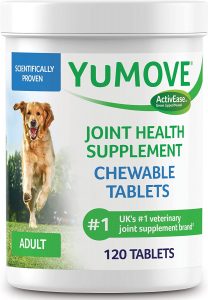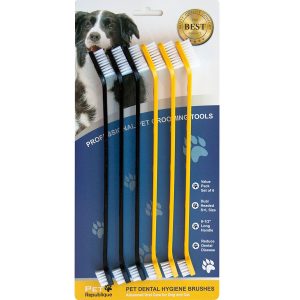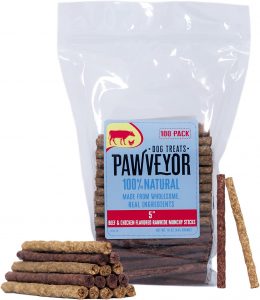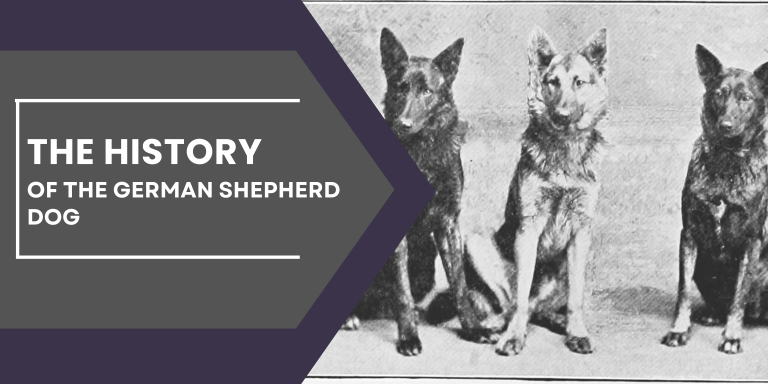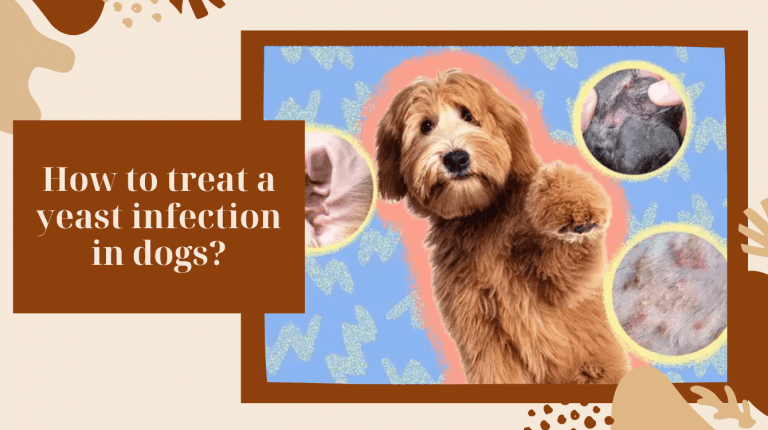YOUR GERMAN SHEPHERD’S TEETH & GUMS
Your Dog’s Teeth and Gums Provide Important Health Signals
At German Shepherd Place we favor the proactive approach to canine health. Helping you to insure the well-being of your dog is high on our priorities.
Good dental care for your dog is a small investment in time and effort on your part. But, be assured, it will produce many dividends in the health of your dog. By the elimination of some causes of heart disease, clean teeth can on such occasions result in extending the life of your dog.
This article has two parts. First you’ll get the facts on how to keep your dog’s teeth clean, and why doing so is important. Second, you’ll discover how to read the health signals given by your dog’s gums. These checks are quick, and they are simple. They’ll help you be proactive, and know quickly when a vet visit is called for.
1. Keeping Your German Shepherd’s Teeth Clean
According to Purdue University professor of epidemiology, Larry Glickman, up to 75% of middle-aged dogs develop gum (periodontal) disease. Much of this is the result of the progressive buildup of tartar. But the good news is that, with the right dental care, gum disease can be largely prevented! It is a matter of making the right food choices for your dog, and having a regular cleaning routine.
A recent study at Purdue demonstrated “a clear statistical link” between gum disease and heart problems in dogs. A sample of 59,296 dogs with periodontal disease was compared to the same number with no history of periodontal disease: 1 “Significant associations were detected between the severity of periodontal disease and the subsequent risk of cardiovascular-related conditions, such as endocarditis and cardiomyopathy…”
As dog owners, this information helps us see that good dental hygiene for our dogs goes beyond sparkling teeth and fresh breath, desirable as those things are. It has real implications for their health, affecting both the quality and potentially the duration of a dog’s life.
Read More: Dog Collar Bells
Brushing
It is recommended that you brush your dog’s teeth twice a week – and once a day is even better. Use a child’s toothbrush and dog toothpaste; or pick up a kit with both brush and paste, from your pet store. When brushing, give the most attention to the back teeth, especially the upper ones. You only need clean the outside of the teeth since the inside surfaces tend to stay clean of their own accord.
Dry Food
Of the commercial food choices, feeding your dog dry food is helpful to the teeth on account of its mildly abrasive action. Nevertheless, you’ll still need to brush.
Chewy Bone Treats
Rawhide “bones” and other hard bone-like treats (Denta Stix and Checkups are two examples) are good, both as an aid to keeping teeth clean, and for the healthy gum massage effect and the jaw exercise involved. Such treats help keep your dog’s teeth clean, but they are not a substitute for brushing.
Nature’s Approach to Clean Teeth
The best natural teeth cleaner, and a great food source incidentally, is for your dog to chew meaty bones – turkey necks in particular are effective. Our raw food article has two videos; scroll to the second one for a quick demo. A dog that is on a weekly regimen of two or three raw meaty bones, including turkey necks, is likely to keep clean teeth with very little brushing needed. In addition, the exercise for the dog’s jaws and whole body is a further health benefit.
Tartar Removal
Even a well-maintained dog’s teeth may have some areas of tartar buildup; and if you get a dog with teeth that have been neglected, there may be a lot of tartar. Either way, it should be removed.
Tartar (also called calculus) is mineralized plaque; and plaque is the white stuff on teeth, around the gum lines, that can be cleaned away with a toothbrush. If plaque is not cleaned off regularly, it hardens into tartar and must be scraped away.
This is where a dental scaler comes in. It’s a tool made specifically for the purpose (below we provide information on where to get one). Here are pointers on how to use a scaler on your dog:
- Get your canine friend accustomed to scaling as a young pup if possible.
- Do the cleaning in a location where your dog is comfortable, and at a time when he is relaxed. It is best to have your dog lie on his side.
- If your pooch refuses to cooperate, do not persist with your efforts. The scaler is a hard, pointed piece of metal that can cause injury! Start fresh another time.
- Follow the instructions on the package. They’ll indicate how to position and move the tool.
- Use gentle strokes. Your mindset should be that the scaler is doing the job, rather than your hand pressure. Light finger movement is all that’s needed as you guide the instrument.
- Scaling of the teeth typically results in some light surface scratching (scarifying) of the enamel. While harmless in itself, this scratching does provide a place for bacteria to settle and grow. Therefore it is important to brush well following scaling.
You can buy a scaler from Walgreens, in the U.S., or other pharmacy for around $6.50 – it will likely include a scaler, a pick and a mirror. Or, for a professional quality scaler, costing about $16.00 you can go to: http://www.homedental.com/detailscaler.asp.
On occasion there will be a dog that for whatever reason simply refuses to cooperate with having his teeth worked on. Some rescued dogs may be in this category, or an older one that wasn’t introduced to such things at a younger age. If this is the situation with your dog, then your vet is there to help.
Read More: Can You Shave Your Shepherd Dog?
2. What Your Dog’s Gums Tell You about His Health
The color of your dog’s gums tell a story, and a healthy dog will generally have pink gums. A few breeds however are exceptions to this rule and have grey or black pigmented gums. The German Shepherd (GSD), the Chow and the Shar Pei are amongst the latter. However, the GSD typically has pink areas on the gums. Whether your dog has solid pink or pink areas interspersed with darker pigmentation, it is the pink areas of the gums that should be observed for our purposes. If in doubt, a good color reading can also be had by looking inside the upper lip or inside a lower eyelid. Here are some abnormal color variations with the associated health problems they are likely to indicate:
Blue: Points to an oxygen deficiency
White: Can indicate one or more of the following conditions:
- Loss of blood either internally or externally. External bleeding will be easy to locate, and pressure must be applied to stop the bleeding. Whether the bleeding is external or internal, veterinary help should be sought immediately. A serious loss of blood can quickly lead to organ damage or failure.
- Anemia. This occurs where there is a lack of healthy red blood cells and/or an iron deficiency.
- Severe dehydration. If the latter is suspected you can test for dehydration by checking the skin’s elasticity (or turgor – pronounced “terjer”) by gripping the dog’s coat gently and pulling it up in a tent, then releasing. The coat should settle back right away; if it is slow to settle, serious dehydration is indicated. In this case, give your dog plenty of water to drink, then see the vet immediately to check for possible organ damage
- An infection, including tick infection. Note that topical flea preventive liquid is formulated to also guard against ticks, amongst other things. (link).Purple or Gray. If these colors are present the dog is likely to be in shock. This condition can be confirmed using the capillary refill test (See next section). If the test is positive, the dog is in shock.
Bright Red. This may indicate the dog has been exposed to a toxin, or alternatively has a systemic infection.
Important: Any abnormal color of the gums should be treated as potentially serious, warranting a visit to the vet.
The Capillary Refill Test for Your Dog: The capillary refill test is done by pressing somewhere on the gums with your finger or thumb. Then release, and observe the color of the area you pressed. It should briefly be white but then return to the normal color within two seconds.
Should the gums remain white beyond a couple of seconds, the dog could be dehydrated. Whether this is the case or not, your dog should always have a bowl of water at hand, so he can drink any time he wishes. If hydration seems fine, then blood loss could be the problem, external or internal. If there is external bleeding, apply pressure to stop the blood flow right away, then see the vet. If bleeding is internal, see your vet immediately.
If your dog’s gums appear white without you compressing them, there could be other causes, including anemia, which is a shortage of sufficient oxygen in the bloodstream to produce adequate healthy red blood cells. White tissue can also indicate the presence of infection, including infection caused by ticks.
Read More: Tinkle Bells For Dogs
CONCLUSION
If you’ve read this article and you are putting the information to work for your dog, you are taking great steps to benefit his or her health! Congratulations!
A Message from the Publisher
We’d enjoy hearing from you!
If you have a moment, let us know what you liked about this article. Plus, share your suggestions – we would value your input. Post comments below, or write, contact@germanshepherdplace.com.
Mark Mulock
Our thanks to veterinarian Dr Paul L Kritzinger for input for this article. Dr Kritzinger has been active as a veterinarian in Britain and the United States, and currently practices at the North Mecklenburg Animal Hospital, in Cornelius, North Carolina. Dr Kritzinger has been involved as the consulting vet in the competition-level breeding of German Shepherds.
ON GERMANSHEPHERDPLACE.COM WE PROVIDE INFORMATION, AND IN SOME CASES MAY OFFER OPINIONS. BUT WE DO NOT OFFER PROFESSIONAL ADVICE. THE INFORMATION PROVIDED MUST NOT BE VIEWED AS PROFESSIONAL ADVICE, NOTWITHSTANDING OUR EFFORTS TO BE FACTUALLY CORRECT. WE DON’T DIAGNOSE DOGS’ CONDITIONS, NOR DO WE PRESCRIBE REMEDIES. WE CANNOT BE HELD RESPONSIBLE FOR ANY OUTCOME, INCLUDING SICKNESS OR DEATH, RESULTING FROM ACTIONS UNDERTAKEN AS A RESULT OF INFORMATION OR OPINIONS FOUND ON GERMANSHEPHERDPLACE.COM. BEFORE ACTING ON ANYTHING YOU READ ON THIS WEBSITE, ADVICE SHOULD BE OBTAINED FROM A VETERINARIAN OR OTHER QUALIFIED PROFESSIONAL.
Read More: Sled dog breeds
Related Links:
- https://en.wikipedia.org/wiki/Canine_tooth /By Wikipedia
- https://en.wikipedia.org/wiki/Dog-tooth /By Wikipedia
- https://en.wikipedia.org/wiki/Puppy_teething /By Wikipedia
- https://en.wikipedia.org/wiki/Dental_health_diets_for_dogs /By Wikipedia
- https://www.wikihow.com/Take-Care-of-a-German-Shepherd /By Wikihow
- https://www.wikihow.pet/Prevent-Tooth-Decay-in-Dogs /By Wikihow
- https://www.wikihow.pet/Control-Tartar-in-Dogs /By Wikihow

